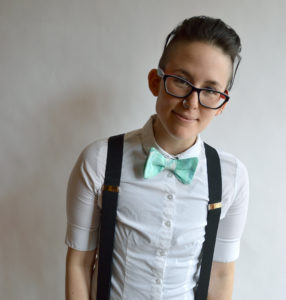Reading Close: Joshua Vettivelu and legibility in absence
Reading Close: Joshua Vettivelu and legibility in absence
There are many ways to hold and be held. We hold what is precious, we hold what is necessary, we hold as an act of care. We hold to restrain, to detain; holding can be an act of violence. We hold boundaries, barriers, and walls to create community; to protect or give the illusion of protection; to create an ‘us’ and a ‘them’.
Surface Tension (Or What Holds an ‘Us’ Together) speaks to, interrogates, and has been constituted by acts of holding. Empathic and injurious, holding is both an intuitive emotional expression and a calculated strategy. Through imagined bodies and visceral consequences, the exhibition demands we reflect on who receives the benefits of empathy. How is the ‘us’ that delivers that empathy constituted? How does the fear of scarcity intervene in the ability to stay present? How much space can be held in wringing hands?
∞ ∞ ∞
Moving through the spaces of Surface Tension (Or What Holds an ‘Us’ Together) feels like many things and no one thing; a construction site, a prison yard, a library, a dream. Places which have been deserted and snuck into, late in the night. Spaces of contemplation. Hypnotic spaces. Haunted spaces.
In the foreground, a table flanked by two chairs. Sharply defined in the beams of two construction lights sits a carefully arranged grid of papers: dense articles and newspaper clippings; single paragraphs or even single sentences isolated in the centres of white pages. The texts weave a complex story across a thirty-three year timeline, beginning in 1986 with the landing of 155 Tamil refugees off the Southern shore of Newfoundland and ending with vitriolic CBC comments: “1000 refugees is 1000 too many”.
In the background, a form rises. Roughly five feet high and fabricated from wet sand, the gargantuan sculpture forms the cross-section of a wave or a sloping hill. Carved from its belly is a chasm; the ghost of a boat. The cavity is modelled after the lifeboats that carried those Tamil refugees through the frigid North Atlantic three-odd decades ago. Facing the bow of the phantom vessel the floor seems to tilt, the room’s centre of gravity destabilized.
Learning Ma’s Nickname is an immersive video installation that carries the viewer on a hypnotic passage, gazing towards an imagined horizon obscured by fog, filter, or dreamlike superimpositions. Churning waves cut starkly to a blinking cursor, a screen capture from Google Translate. Words leap back and forth between Tamil and English forming an eerie poetry of absence. Physical earth, language, and digital networks collapse into one glowing landscape. Spectral forms skitter across the screen, eventually coalescing into a single solid body; the artists’. They fling handfuls of earth into bodies of water. They stumble and struggle to ascend the dramatic hill of rocks the ocean has pushed up. The scenes are characterized by a melancholic longing.
∞ ∞ ∞
Do the rocks know they are being shaped by the sea? Shorelines change moment to moment, becoming and unbecoming dramatic topographies under the weight of the churning tides. Earth, water, pressure; the forces that shape sand castles are the same that shape the shores; the edges of the land, both physical earth and social construct.
In the eerie space of Surface Tension, the earth defies gravity. Elucidated in essays by Gobhina Nagarajah and Arun Nedra Rodrigo*, the material presence and anticipated deterioration of this work acts as a metaphor for the forces that shape a concrete ‘we’. In Land as Mirage, Rodrigo demonstrates how these forces manifest as “networks of desire/covenants that shape…concepts like community and nation”. In Arbitrary Lines, Nagarajah provides an overview of the changes in Canadian refugee law that moved to endanger the lives of asylum seekers rather than shift the distribution of resources.
∞ ∞ ∞
Joshua Vettivelu’s practice has long played on the continuum of presence and absence. Their work manipulates image and space in a ballet of here and not-here. Referencing the multiple phases of removal generated by mediated images, creating poetry that exists and disappears with shifts of light or pixels, they ask us to form relationships with traces, with ghosts. Though material products may manifest, the process is the meat of their work, drawing into dialogue individuals across lines of power, both intimate and institutional.
In the process of developing this work they chased scraps of stories and memories across the Southern Shore, through article after article spinning yarns of increased trepidation and fear. While so many members of the local community contributed labour, food, rides, and stories, others looked on with disdain. National policy translated into provincial politics trickled into individual bodies. Narratives emerged around an unstable provincial economy, sunk by debt in a hydroelectric boondoggle and crumbling infrastructure, conflating misuse of government funds with suspicion around “foreign bodies”. The conflict between the generosity of presence and the fear engendered by absence was palpable. Bolstered and articulated through sand and water, paper and pixel, the tension of this dialogue is the real medium of the work.
∞ ∞ ∞
The act of imagining holds this exhibition together. The viewer is asked to bear witness to a void; to forms of absence that question the limits of care.
Do the rocks know they are being shaped by the sea?
Kailey Bryan, Curator
*Publication forthcoming

Kailey Bryan is an artist and curator based in St. John’s, Ktaqmkuk. They are a member of curatorial collective RetroFlex, who are orchestrating a year of programming at Eastern Edge Gallery and partnering organizations that critiques practices and ideas of the archive as they relate to local queer histories